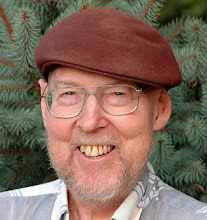When we had children, Sarah and I shared the delight of Tolkien with each of them, enjoying many an evening of bedtime reading.
Evergreen Leaders’ wilderness path is based on the principle that thriving organizations regularly take long journeys into the unknown as a way to discover new ways to produce their treasure.
Recently I was teaching Evergreen Leader’s wilderness path to a group in their early 20’s. One of the young women said, “Isn’t the wilderness path just normal life?” The wilderness path is normal when you are in your 20’s and searching for a career, a spouse, and your place in the universe.
Most organizations prefer to spend as little time as possible in the state of the unknown.
Yet all nonprofits start out on the wilderness path. They begin when the founders have an idea of how to meet an existing social need that is not currently being met. Nonprofits begin with a trip into the wilderness to discover the treasure that emerges when you create an organization that meets a powerful human need.
From the beginning of the 20th century most people in the
Out of that questioning grew a movement of nonprofits that make it possible for people with developmental disabilities to live, work, and play to the best of their abilities in their home communities.
Often these nonprofits were started by a group of parents who wanted their adult sons and daughters still living at home to have a place to work or do crafts during the day time. They took the wilderness path, creating the organizations with a limited vision of what they were doing.
They simply sensed that they wanted something better for their adult, developmentally disabled sons and daughters, something better than sitting at home by themselves, something better than going to a state institution.
By the 1970’s state governments began to realize these small nonprofits were a treasure, a viable, humane alternative to the state institutions, and they began to fund them.
Organizations try to get out off the wilderness as soon as possible. They establish policies and procedures as a way to reduce the unknown and consistently produce the treasure, consistently meet the needs of their clientele.
But organizations can never quite get away from the unknown. Hence, planning was invented. Thriving organizations are constantly aware that they can do a better job of producing the treasure. To make those improvements, organizations usually adopt yearly goals.
But sometimes organizations need to make major changes in order to produce the treasure in a better way. I worked for a nonprofit that had purchased a nursing home in 1977 and converted it to a living place for 88 people with developmental disabilities from the institutions in
Soon after the purchase the staff of the agency realized that they had made a mistake. While the nursing home was a lot better that the state institutions living with 80+ other people in a crowded nursing home was not a treasure.
Finally in 1992 the board of the organization voted unanimously to close the home by 1995 and open small group homes to make it possible for each person to live with a handful of others.
It truly was a wilderness path with many obstacles along the way. The organization had to convince the state bureaucrats to change their rules to stop paying for the nursing home and to start paying for the small group homes. The organization, even though it had never done a capital campaign, raised $1.2 million to make the change possible. Some homes had to be built to accommodate those who used wheelchairs while others homes were purchased and renovated for people who did not need wheelchair accessible homes.
The last person moved out of the nursing home and into a small group home in May of 2000.
To produce our treasure thriving organizations combine short plans with periodic, long journeys into the unknown to discover new ways to produce the golden egg, that treasure that brings people to the door of a nonprofit in desperation and hope.
In order to consistently produce the treasure that their clients are looking for, thriving nonprofits do the following:
- Develop a regular pattern of planning to improve ways of producing the golden egg.
- Include clients in the planning.
- Make it possible for everyone in the organization to plan how their job and their part of the organization will help produce the treasure.
- Include mile markers in the plans
- A core group of leaders in the organization periodically commits to the long journey of a big, hairy audacious goal to transform the way the organization produces the treasure.
- Everyone is involved in making organizational course corrections.
- Everyone understands how plans and changes will help do a better job of producing the treasure.
- Everyone celebrates key mile markers.
- The organization recreates itself and the way it produces the treasure.

